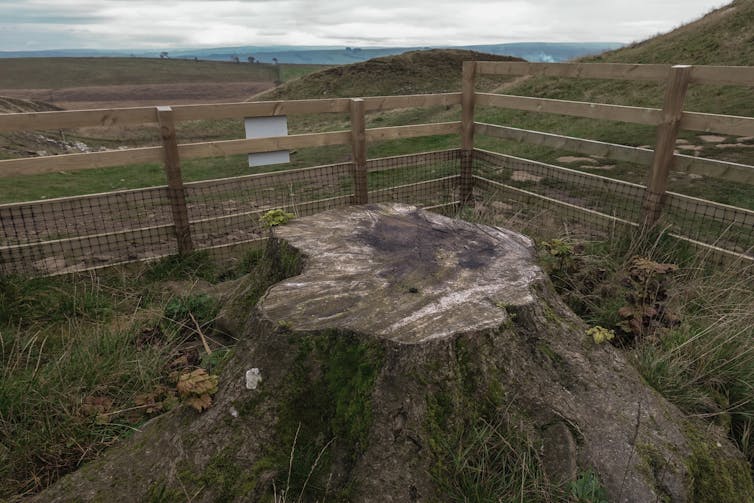Source: The Conversation – UK – By Michael Martin, Lecturer in Urban Design and Planning, University of Sheffield

Children play everywhere. Yet their right to play – protected by a UN convention – is constantly challenged by adults.
Play is crucial to support children’s holistic development in cognitive, emotional, physical and social skills. Likewise, we know children’s environments significantly influence their health and wellbeing, for better or worse.
But across cities, young people are let down by a built environment that fails to appropriately consider their needs.
Places where children commonly used to play, such as streets and local neighbourhoods, have been transformed into car-only spaces where traffic and parking take priority. Likewise, city spaces frequently “design out” children by prohibiting skateboarding, ball games and other kinds of play.
Over time, urban planning has confined children’s opportunities for play to dedicated playground spaces only.
Get your news from actual experts, straight to your inbox. Sign up to our daily newsletter to receive all The Conversation UK’s latest coverage of news and research, from politics and business to the arts and sciences.
However, children don’t have equal access to these formal play spaces. In the largest study of playgrounds in England, my colleagues and I found substantial inequalities in access to play. Children in the most deprived areas needed to travel further to their nearest playground.
In new research, I’ve explored four international examples of how children and play can be promoted in less likely urban spaces. My findings show how play can be promoted in cities to support children’s right to play anywhere – but also that there is widespread hostility to children’s right to use urban spaces for play.
Power of play
In Sydney, a pedal park installation with temporary jumps, ramps and a pump track was set up in different car parks for the duration of the winter. In Paris, a play street was created in central Paris by closing road traffic on Friday afternoons in autumn and spring.
In Belfast, temporary play equipment and playful street furniture was set up in the Cathedral Gardens public space.

Park Hood Ltd.
In Milan, a community-led design involved children in creating a colourful grid, planters, growing beds and games in a school car park, which went on to inspire a new municipal programme of temporary school streets and piazzas.
These play spaces allowed children to play freely, play with objects, play pretend, play games with rules, and play physically – the core pillars of play. What’s more, they enabled children to develop new connections with their community by appropriating urban spaces to promote relaxation and fun. This was vital following the trauma of the global pandemic – all the projects were active during COVID-19 outside of lockdown.

Rue’golotte
These short-term projects invited children to enjoy urban life in new ways. In fact, they bolstered civic access for people of all generations. In Sydney, the closure of the car park fostered a new sense of community. Caregivers, grandparents and residents were able to connect with each other in a whole different setting.

Randwick City Council
Politics of play
But despite the positives, over time, the projects faced protest and tension. In Milan, fears from residents emerged on play being used as a tool to displace poorer communities. This was in response to the area having long been earmarked for regeneration. In Sydney, Paris and Belfast, people actively targeted and sabotaged the informal play spaces.
In Sydney, to park their cars, older citizens successfully lobbied local councillors to reduce the total amount of space for play, from the entire car park to one aisle of parking. In Paris, local businesses were exasperated by the presence of children. Collectively they threatened project initiators and staged a protest, claiming that “play streets kill local shops”. In Belfast, the pop-up play space was set on fire, multiple times. By summer 2022, much of the park had been destroyed.

Author
The outcomes demonstrate the politics that children, and their play, were exposed to. Because of a range of aggressive behaviour from adults, children’s use of streets and public spaces were consistently restricted. A common statement from dissenters was “children can go elsewhere”. The reality is they can’t.
In tracking informal play projects through the pandemic and subsequent years, two additional factors hampered their longer-term success. For the council projects in Sydney and Belfast, council officers hoped to direct more resources to urban play, but the lack of a specific local policy to support play was a significant constraint. By comparison, the community projects in Paris and Milan placed an unsustainable pressure on volunteers to ensure prolonged success.
Lessons from previous crises highlight how tensions and conflict can affect innovative uses of space, often diluting their progressive purpose. Ultimately, children’s play in recovery from the pandemic experienced a similar fate.
This is worrying because Unicef research has shown children’s wellbeing has continued to suffer after COVID-19.
Places that allow for children’s play can create dynamic neighbourhoods, intergenerational encounters, and meaningful participation in urban spaces – if only we let it happen.
![]()
Michael Martin does not work for, consult, own shares in or receive funding from any company or organisation that would benefit from this article, and has disclosed no relevant affiliations beyond their academic appointment.
– ref. How to give children the freedom to play all across the city – not just in playgrounds – https://theconversation.com/how-to-give-children-the-freedom-to-play-all-across-the-city-not-just-in-playgrounds-260444











